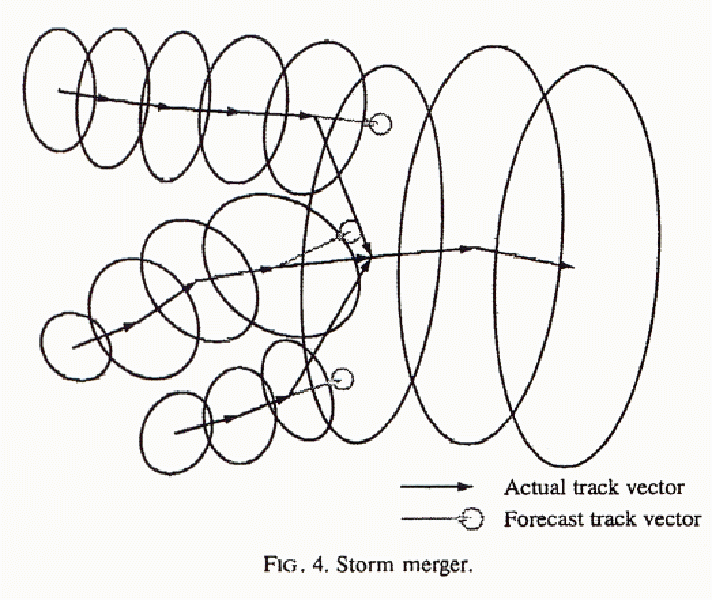Cell Tracking
The current URP cell-tracking algorithm uses the following approach:
- the latest 10 minute cell motion is used
- a forecast of cell position is produced at T+10 minutes
- new cells are assumed to have no velocity
- look at the distance error Δd between the forecast and observed cell positions. It also looks at relative areas, shapes, and reflectivity values.

- When cell ellipses overlap, algorithm will show one cell. This is problematic for tracking history. URP uses the highest MAXR storm as history.

l
The new algorithm uses the following approach:
- calculate and use a 30 minute (configurable) mean cell velocity. If the cell is less than 30 minutes old, use its entire life span. Knowledge of the mean velocity provides more consistent tracking and possible input into warnings
- a forecast of cell position is produced at T+10 minutes
- new cells are pushed along with 0-8 km mean winds. New cells do not spring into existence with zero velocity.
- new cells are pushed along with 0-8 km mean winds. New cells do not spring into existence with zero velocity.
- look at not only the distance error Δd between the forecast and observed cell positions but also the volume ratio
- Subjective rules have been create that disallow unreasonable matches
- cell track "matches" that result in motions that deviate too much from their neighbours or from the mean flow are disallowed
- the new rules need fine-tuning in squall lines where cell centroids move erratically with the consolidation and shedding of individual cells
1.5 km CAPPI image with cell tracks added. This case encompasses the Pipestone F3 tornado that touched down about 0030Z. Note that this not only uses the current approach to cell tracking but also the current approach to cell identification.
The same image as above but with the reflectivities removed. Note that some tracks appear odd.
The same reflectivity/cell track composite as above, this one using the new tracking algorithm as well as the new cell identification algorithm.
The same as above, expect that the reflectivities have been removed. Note the more coherent storm tracks.